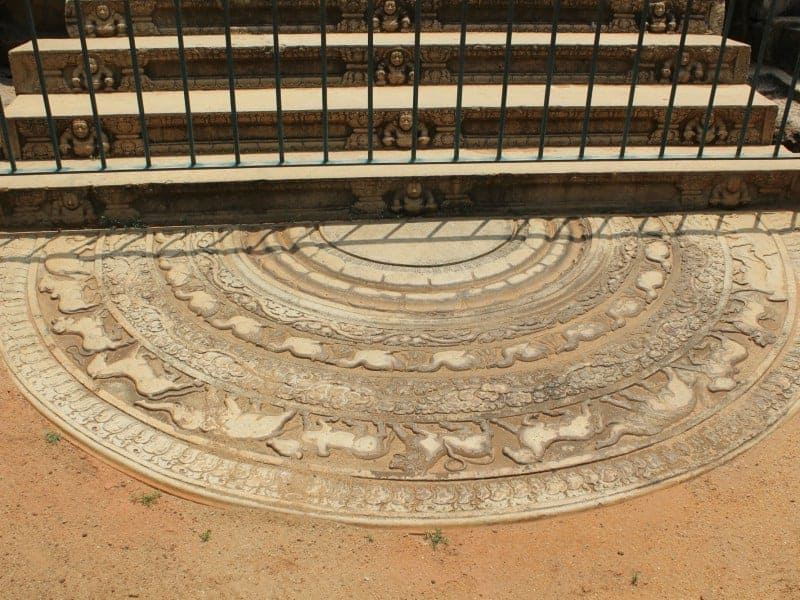The Biso Maligawa or Queen’s Palace when literally translated, is located in the vicinity of the famous and extensive Abhayagiri Monastic Complex. Abhayagiri is one of the larger monastic complexes in Anuradhapura, with not just the famed stupa but also many other facets and important historical buildings. The Biso Maligawa is well-known for the incredible preservation of its moonstone while the rest of the ruins don’t look like much in their present state. Originally the Biso Maligawa might not have been a palace or even a building owned by the ruling family of the time. We have no idea what it was used for, although it might have been just another part of the monastery itself, or perhaps an image house or related structure. It does, however, date back to the 7th to the 8th Centuries AD, during the later Anuradhapura Period and somewhat before the rise of Polonnaruwa. The moonstone in question itself is done in impressive detail.
For one, it has the classical shape of the older moonstones, as well as the normal features of the ring of flames on the outer rim of the carving and four animals parading across a ring towards the inside of the stone. They are bull, elephant, lion, and horse. In the later Polonnaruwa moonstones, the bull was removed as it was sacred to the Hindus. Other details included in the moonstone include the lotus in the center, or at least an aerial shot of a lotus, half-formed and looking more symbolic than realistic. The bloom symbolizes Nirvana and purity. Flat images include the liyawel or twisting vines and floral shapes that symbolize the power of sinful desire and a row of swans holding flowers in their beaks.
Written by Vasika Udurawane for Travel Lanka Compass



0 Comment